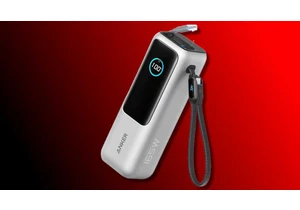RealSense, a depth-camera technology that basically disappeared within Intel, has returned as a separate company.
The company has spun out from Intel and raised $50 million in funding. The company will be led by Nadav Orbach, Intel’s former vice president and general Manager for the Incubation and Disruptive Innovation group.
RealSense plans to address “increased demand for humanoid and autonomous mobile robotics (AMRs), as well as AI-powered access control and security solutions,” the company said.
RealSense flourished, so to speak, about a decade ago, when its depth-camera technology was competing with the Microsoft Kinect system. Though Intel was able to license the RealSense technology to device makers like Creative, the tech seemed to flounder in the PC space–even as Windows Hello and its depth-camera tech became a staple on Windows 10 PCs.
Intel instead adapted its technology for the robotics market.
“RealSense will continue to support its existing customer base and product roadmap, including the acclaimed RealSense depth cameras, embedded in 60 percent of the world’s AMRs and humanoid robots, an incredibly fast-growing segment,” RealSense said in a statement. “Its recently launched D555 depth camera, powered by the next-gen RealSense Vision SoC V5 and featuring Power over Ethernet (PoE), demonstrates the company’s ongoing leadership in embedded vision technology and edge AI capabilities.”
Intel, meanwhile, has been feverishly working to cut costs, revamping its foundry strategy, and laying off employees in a bid to get its finances back on track.
https://www.pcworld.com/article/2846867/realsenses-depth-camera-tech-spins-off-from-intel.html
Inicia sesión para agregar comentarios
Otros mensajes en este grupo.

These days, the pre-leaving checklist goes: “phone, keys, wallet, pow

One of the most frustrating things about owning a Windows PC is when

Every now and then, you hear strange stories of people trying to tric

Cars are computers too, especially any car made in the last decade or

Cropping images on Windows is easier than you think, thanks to built-


Apart from a handful of devices with Thread radios, most of Belkin’s
